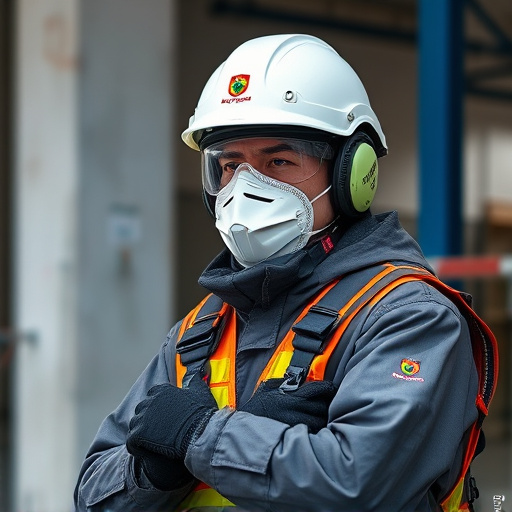Cold Air Intake (CAI) systems enhance turbocharged engine performance by drawing in colder, denser air, improving combustion efficiency and boosting power. For optimal results, CAI components must be seamlessly integrated with turbochargers, focusing on unobstructed airflow paths, strategic placement, and efficient routing. Key considerations include optimizing manifold size, using high-temperature materials, prioritizing large cross-sectional areas, and advanced filter media to capture contaminants while minimizing pressure loss. This leads to improved turbine efficiency, increased boost pressure, and enhanced engine performance under high loads, ensuring cold air intake turbo compatibility for reliable, consistent boost throughout the RPM range.
“Unleash the power of your engine with an exploration of turbo engine intake designs, a game-changer in automotive performance. This article delves into the intricate world of cold air intake (CAI) and its seamless integration with turbos, enhancing ‘boost’ efficiency. We’ll guide you through optimizing airflow, exploring design considerations, and uncovering the secrets to successful implementation. From understanding turbo compatibility to achieving peak boost, this is your ultimate resource for unlocking your engine’s true potential.”
- Understanding Cold Air Intake and Turbo Compatibility
- Designing for Boost: Optimizing Flow and Efficiency
- Key Considerations for Successful Turbo Engine Intake Implementation
Understanding Cold Air Intake and Turbo Compatibility

In the pursuit of enhancing engine performance, especially in turbocharged vehicles, understanding cold air intake (CAI) and its compatibility with turbochargers is paramount. CAI systems are designed to draw in cooler, denser air from outside the engine compartment, providing a boost in power and efficiency. This cold, dense air is crucial for optimal combustion, as it increases the air-fuel mixture’s ability to burn more efficiently, resulting in enhanced performance.
When integrating a cold air intake with a turbocharger, ensuring compatibility is key. Turbochargers rely on a consistent supply of air to maintain boost levels; thus, a well-designed CAI system should complement this process without causing restrictions. Proper placement, sizing, and routing of the intake components can significantly improve turbo efficiency and overall engine performance.
Designing for Boost: Optimizing Flow and Efficiency

When designing a turbo engine with cold air intake (CAI) for optimal boost and efficiency, every component must be carefully considered to ensure seamless compatibility. The goal is to create an uninterrupted path for cool, dense air to flow directly into the engine, maximizing power output while minimizing pressure loss. This involves optimizing the size and shape of the intake manifold, selecting suitable materials that withstand high temperatures and pressures, and strategically placing air filters for maximum efficiency.
Engineers often focus on several key factors: ensuring a large cross-sectional area to accommodate higher airflow volumes, designing smooth transitions from the CAI to the engine to reduce turbulence, and incorporating advanced filter media that provides excellent air flow rates while capturing harmful contaminants. By prioritizing these aspects, designers can achieve better turbine efficiency, resulting in increased boost pressure and overall engine performance, especially under high-load conditions.
Key Considerations for Successful Turbo Engine Intake Implementation

When implementing a turbo engine intake system, several key considerations are essential for optimal performance and reliability. The primary focus should be on ensuring cold air intake turbo compatibility. This involves selecting an intake design that facilitates the direct path of cold, dense air into the engine, which is crucial for boosting power. The intake must be engineered to minimize restrictions in airflow, allowing maximum air flow and pressure delivery to the turbine side of the turbocharger.
Additionally, the boost generated by the turbocharger needs to be carefully managed. Proper venting and pressure regulation are vital to prevent boost fluctuations that can harm engine components. A well-designed intake system should incorporate features like efficient air filters, optimized velocity curves, and smart routing to ensure consistent boost levels throughout the engine’s RPM range, maximizing both power and efficiency.
In conclusion, understanding the symbiotic relationship between cold air intakes and turbochargers is key to unlocking optimal engine performance. By designing intake systems that prioritize efficient airflow and boost delivery, vehicle engineers can significantly enhance power outputs while improving fuel efficiency. When implementing these strategies, considerations such as material choices, air filters, and charge cooling are paramount for achieving successful turbo engine intake results, ensuring both reliability and enhanced driving dynamics.














